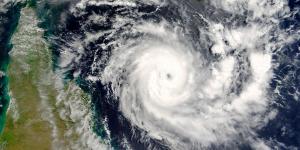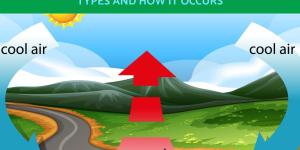When Is It Considered Strong Wind?


Have you ever been caught outside during a sudden gust that nearly knocked you off your feet? Strong winds are more than just an inconvenience – they can pose a significant threat to both personal safety and property damage. Knowing how to identify strong winds and the associated risks allows you to take necessary precautions to safeguard yourself, your loved ones, and your property.
This article from thedailyECO explores when wind is considered strong, how wind speed is categorized, and essential safety measures to protect yourself and your property.
What mph is windy?
Windy conditions are generally considered to be sustained winds between 20 and 25 mph, with frequent gusts of 25 to 35 mph. This can feel like difficulty holding an umbrella or feeling a breeze strong enough to mess up your hair.
- Moderate to strong wind: wind speeds between 20 and 40 kilometers per hour (approximately 13 to 25 miles per hour) may cause discomfort when walking or affect the stability of light objects.
- Very strong wind to gale: wind speeds greater than 40 kilometers per hour (25 miles per hour) can be considered very strong and can cause significant difficulties in walking and affect the safety of structures and objects.
- Storm or hurricane wind: in extreme situations, such as during a storm or hurricane, wind speeds can exceed 120 kilometers per hour (75 miles per hour) or more, which can be extremely dangerous and cause severe damage.
Curious about hurricanes? Dive deeper in this other article to learn how these powerful storms form and what they are.

What is the normal wind speed?
Wind speed is a fascinating aspect of our planet's weather. There's no single "normal" speed because it constantly changes depending on location, time of day, season, and weather.
But that doesn't mean we can't understand wind. The Beaufort Wind Scale, invented by Admiral Sir Francis Beaufort in the early 1800s, is a helpful tool that categorizes wind speed based on its effects on land or water.
Under calm conditions, wind speeds are generally below 1 mph (1.6 kilometers per hour). Light breezes, which most people find pleasant, range from 1 to 5 mph (1.6 to 8 kilometers per hour).
Did you know there are different types of monsoons? Explore more about how they form and their impact in this other article.
Dangers of strong wind
Strong winds are a significant weather phenomenon that can pose various threats depending on their intensity and duration. Here's a breakdown of the key dangers:
- Property damage: high winds can cause structural damage to buildings, houses, fences, poles, and trees. Falling debris from damaged structures or uprooted trees can cause injuries or fatalities.
- Falling objects: loose objects outdoors become dangerous projectiles in strong winds. This includes branches, signs, unsecured furniture, and any other items that can become airborne.
- Vehicle safety: strong winds can significantly impact vehicle control, especially for high-profile vehicles like trucks and buses. This increases the risk of rollovers, particularly on exposed roads or bridges.
- Power grid disruptions: strong winds can damage or topple power lines and poles, leading to widespread power outages. Downed power lines pose a serious electrical hazard and should never be touched.
- Navigation difficulties: strong winds create hazardous conditions for maritime navigation due to high waves and reduced visibility. Air travel can also be impacted with difficulties during takeoff and landing.
- Outdoor activity risks: strong winds can make outdoor activities like hiking, cycling, or water sports dangerous due to reduced stability and control.
Ever heard of the Foehn effect? Unveil the secrets of this weather phenomenon in this other article.

How to protect yourself from strong wind
Strong winds can pose a significant threat to both personal safety and property. Here are key steps to mitigate these risks:
- Stay informed: monitor weather forecasts and warnings issued by local authorities to be aware of impending strong winds.
- Secure outdoor belongings: reduce potential damage and injuries by anchoring, storing, or bringing in outdoor furniture, toys, tools, and any other loose objects.
- Fortify openings: ensure windows and doors are securely closed and eliminate any potential gaps to prevent wind penetration.
- Tree maintenance: prune trees and overhanging branches that could break or become airborne during strong winds, minimizing damage to structures and potential injuries.
- Reinforce exterior structures: securely anchor fences, awnings, and signs to prevent them from being ripped away or damaged by strong winds.
- Minimize exposure: avoid open and exposed areas during strong winds to minimize the risk of flying debris or falling objects.
- Safe driving: exercise extreme caution while driving, especially on exposed roads or areas with dense vegetation, to maintain control of your vehicle.
- Animal care: ensure pets and farm animals are secured in safe and enclosed areas during strong winds to protect them from harm.
- Power outage preparedness: have a plan in place for potential power outages by having a battery-powered radio, flashlight, and charged phone readily available.
By following these preventative measures, you can significantly reduce the dangers associated with strong winds and ensure the safety of yourself, your property, and your loved ones.
Sandstorms can be very destructive. Ever wondered what unleashes these powerful blasts of sand? Learn more sandstorms in this other article.
If you want to read similar articles to When Is It Considered Strong Wind?, we recommend you visit our Meteorological phenomena category.







